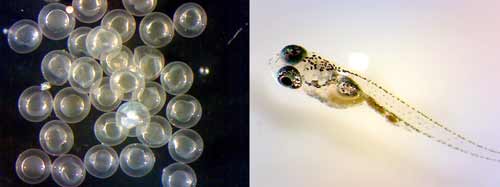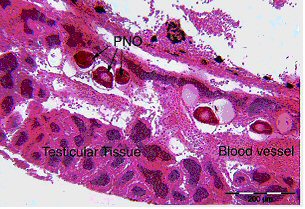- Your Product Type
- Your Study Type
- Aquatic Ecotoxicology
- Aquatic Invertebrates
- OECD 202: Daphnia sp., Acute Immobilisation Test
- OECD 211: Daphnia magna Reproduction Test
- OECD 235: Chironomus sp., Acute Immobilisation Test
- OECD 218/219: Sediment-Water Chironomid Toxicity Test Using Spiked Sediment/Spiked Water
- OECD 233: Sediment-Water Chironomid Life-Cycle Toxicity Test Using Spiked Water or Spiked Sediment
- OECD 225: Sediment-water Lumbriculus Toxicity Test Using Spiked Sediment
- OECD 242: Potamopyrgus antipodarum Reproduction Test
- OECD 243: Lymnaea stagnalis Reproduction Test
- Fish and other vertebrates
- OECD 203: Fish, Acute Toxicity Test
- OECD 215: Fish Juvenile Growth Study
- OECD 212: Fish, Short-term Toxicity Test on Embryo and Sac-fry Stages
- OECD 231: The Amphibian Metamorphosis Assay
- OECD 236: Fish Embryo Acute Toxicity Test
- OECD 210: Fish, Early-life Stage Toxicity Test
- OECD 229 Fish Short Term Reproduction Assay and OECD 230 21-day Fish Assay
- OECD 240 Medaka Extended One Generation Reproduction Test (MEOGRT)
- OECD 248: Xenopus Eleutheroembryonic Thyroid Assay
- OPPTS 850.1500: Fish Life Cycle Toxicity Test
- OÈCD 234 Fish sexual development test
- Aquatic plants
- Analytical Dose Verification
- Aquatic Invertebrates
- Chemistry
- Biodegradation Studies
- Analytical Chemistry Studies and Residues
- Physical-Chemical Properties Studies
- Storage Stability Studies
- OPPTS 830.6302, OPPTS 830.6303,and OPPTS 830.6304: Physical State, Colour and Odor at 20 °C and at 101.3 kPa
- EU A.1: Melting temperature/range
- EU A.2: Boiling temperature
- EU A.3: Relative density (liquids and solids)
- EU A.4: Vapour pressure
- EU A.5: Surface tension
- EU A.9: Flashpoint
- EU A.10: Flammability (solids)
- EU A.12: Flammability (contact with water)
- EU A.13: Pyrophoric properties of solids and liquids
- EU A.16: Relative self-ignition temperature for solids
- EU A.17: Oxidising properties
- OECD 114: Viscosity of Liquids
- Environmental Fate
- Transformation in Soil
- Transformation in Water
- Transformation in Manure
- Adsorption on Soil and Sewage Sludge
- Bioaccumulation and Bioconcentration
- Terrestrial Ecotoxicology
- Non-target Arthropods
- Non-target arthropod testing with the parasitic wasp (Aphidius rhopalosiphi)
- Non-target arthropod testing with the lacewing (Chrysoperla carnea)
- Non-target arthropod testing with the ladybird beetle (Coccinella septempunctata)
- Non-target arthropod testing with the predatory bug (Orius laevigatus)
- Non-target arthropod testing with the predatory mite (Typhlodromus pyri)
- Non-target arthropod testing with the rove beetle (Aleochara bilineata)
- Non-target arthropod testing with the carabid beetle (Poecilus cupreus)
- Non-target arthropod testing with the wolf spider (Pardosa spec.)
- Soil Organisms
- Honey Bees and other Pollinators
- OECD 213/214: Honey bees, Acute Oral and Acute Contact Toxicity Test
- OECD 245: Honey Bee (Apis Mellifera L.), Chronic Oral Toxicity Test (10-Day Feeding)
- OECD 237: Honey Bee Larval Toxicity Test, Single Exposure
- OECD 239: Honey Bee Larval Toxicity Test
- EPPO 170: Honey Bee Field Study – do plant protection products effect honey bee colonies?
- Oomen et al. 1992: Honey Bee Brood Feeding Study
- OECD 75: Honey Bee Brood Test under Semi-field Conditions in Tunnels
- OECD 246/247 Acute Oral and Contact Toxicity to the Bumblebee, Bombus terrestris L.
- Solitary Bee Acute Contact Toxicity Study in the Laboratory (Osmia sp.) Solitary Bee Acute Oral Toxicity Study in the Laboratory (Osmia sp.) (protocols for ringtests with solitary bees recommended by the non-Apis working group)
- SANTE/11956/2016 rev.9 Residue trials for MRL setting in honey
- Non-target plants
- OECD 208: Terrestrial Plant Test - Seedling Emergence and Seedling Growth Test
- OECD 227: Terrestrial Plant Test - Vegetative Vigour Test
- OCSPP 850.4100: Seedling Emergence and Seedling Growth
- OCSPP 850.4150: Vegetative Vigor
- EPPO PP 1/207(2): Efficacy evaluation of plant protection products, Effects on succeeding crops
- Field Studies
- Non-target Arthropods
- Ecological Modelling
- Quality Assurance
- Testing of Potential Endocrine Disruptors
- Aquatic Ecotoxicology
- News
- Company
- Career
- Contact
OECD 229 Fish Short Term Reproduction Assay and OECD 230 21-day Fish Assay
The fish tests according to OECD 229 and 230 are short assays giving information on effects of chemicals on fish reproduction, which can be caused by endocrine disrupting effects. The performance and duration of both tests is similar, but the endpoints are different.
Sexually mature male and female fish are exposed to chemicals for 21 days according to both guidelines. The following Table 1 gives an overview of specific endpoints:
| Guideline | Test duration | Endpoints | |
|---|---|---|---|
| OECD 229 | Fish Short Term Reproduction Assay | 21 days post hatch |
Vitellogenin |
| OECD 230 | 21-day Fish Assay: A Short-Term Screening for Oestrogenic and Androgenic Activity and Aromatase Inhibition |
21 days post hatch |
Vitellogenin |
Test Organisms
- Pimephales promelas (fathead minnow)
- Danio rerio (zebrafish)
- Oryzias latipes (Japanese medaka)

OECD 230: 21-day Fish Assay
The fish screening assay of 21 days is an adequate tool to reject or verify an endocrine effect of a substance on adult fish. The following endpoints are observed and interpreted for the assessment of endocrine potential:
Secondary Sexual Characteristics
Some endocrine active chemicals may induce changes in e.g the number of nuptical tubercles in male fathead minnow or the papillary processes in male medaka. Or abnormal occurrences of secondary sex characteristics can be observed like female fathead minnows developing pronounced nuptical tubercles. For the evaluation recommended procedures are established.
Vitellogenin
Vitellogenin is an egg yolk precursor produced in the liver as response of circulation endogenous oestrogen. For the determination of the vitellogenin content, blood is collected from the fish and quantified with an ELISA method. It allows the detection of oestrogenic chemicals in male fish due to the occurrence of vitellogenin. If the level of vitellogenin in female fish is lower than in the control this might be the case because the synthesis of oestrogen is inhibited by an aromatase inhibitor.
OECD 229: Fish Short Term Reproduction Assay
The short term reproduction assay has the same duration as the fish screening assay but investigates more study endpoints. Beside the endpoints monitored in the Fish Screening Assay the further endpoints are:
Fecundity
Fecundity is monitored daily as observation of spawning and egg production. Spawning substrates are necessary for fathead minnow and zebrafish. Although this parameter is not endocrine specific, in case of unaffected fecundity a test item is not likely endocrine active.
Evaluation of gonadal histopathology
The gonads are preserved and histopathology may be evaluated to assess reproductive fitness. This might be the case on request of some regulatory authorities or when vitellogenin and secondary sex characteristics did not respond to chemical exposure. Specific endocrine-related responses determinable in histopahtological assessments are e.g. testicular oocytes and decreased yolk formation.

Guidelines and literature
- OECD Guidelines for the Testing of Chemicals Test No. 229: Fish Short Term Reproduction Assay.
- OECD Guideline for Testing of Chemicals, Test No. 230: 21-day Fish Assay: A Short-Term Screening for Oestrogenic and Androgenic Activity, and Aromatase Inhibition.
